blog
Book review: Mountaintops to Moonscapes / Oil Sands / Tar Sands by Alan Gignoux
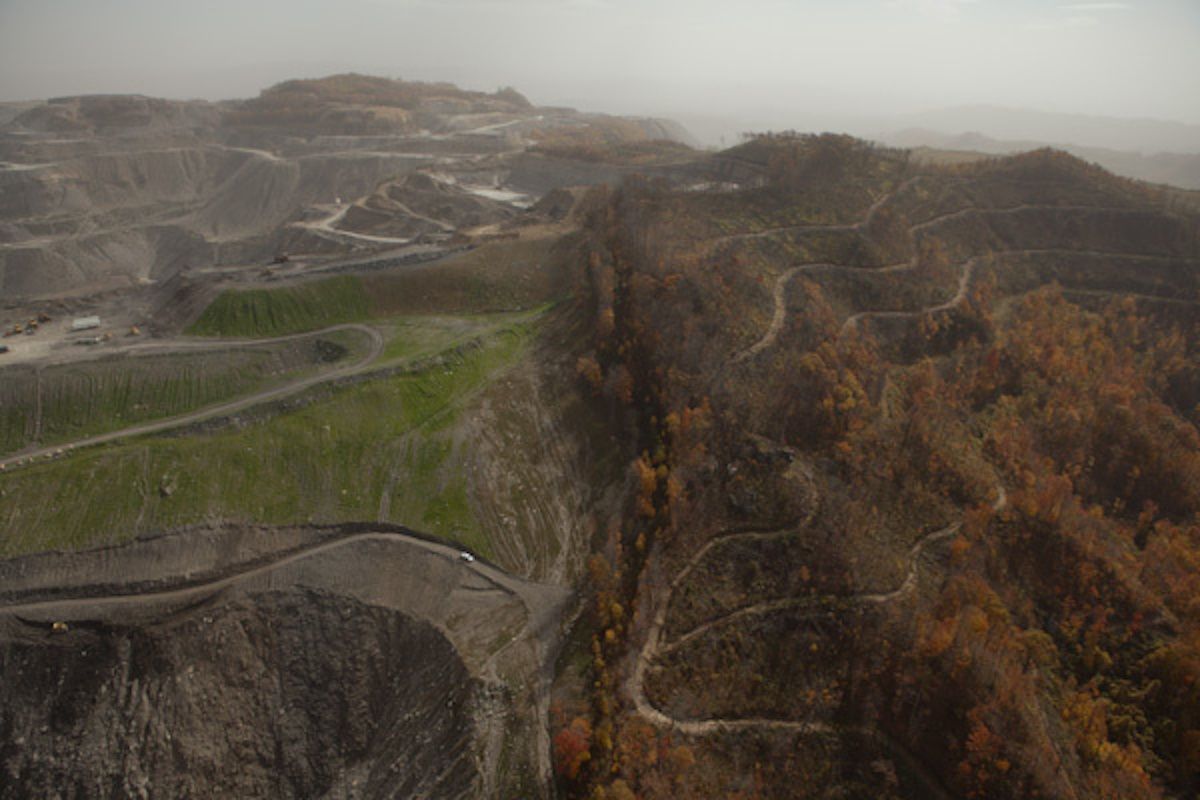
“Half Naked” The effects of blowing Appalachian mountains up. © Alan Gignoux
I was generously asked to review a trio of books by Alan Gignoux recently. Alan’s images and featured interviews in his books Oil Sands and Tar Sands show the effects of petroleum industry impact on the land of Alberta, Canada. Many aerial photos depict the surface of Alberta scraped clean of anything green and growing. Some pages in Oil Sands have little pockets bound on pages which hold colorful images of these same locales – punctuated here and there amidst the environmental carnage. These images pose the rhetorical question: are these colorful images of homes, people or locations little sprouts of hope, or the last remnants of what existed before the oil companies provided a faux boon for the people and the economy there?
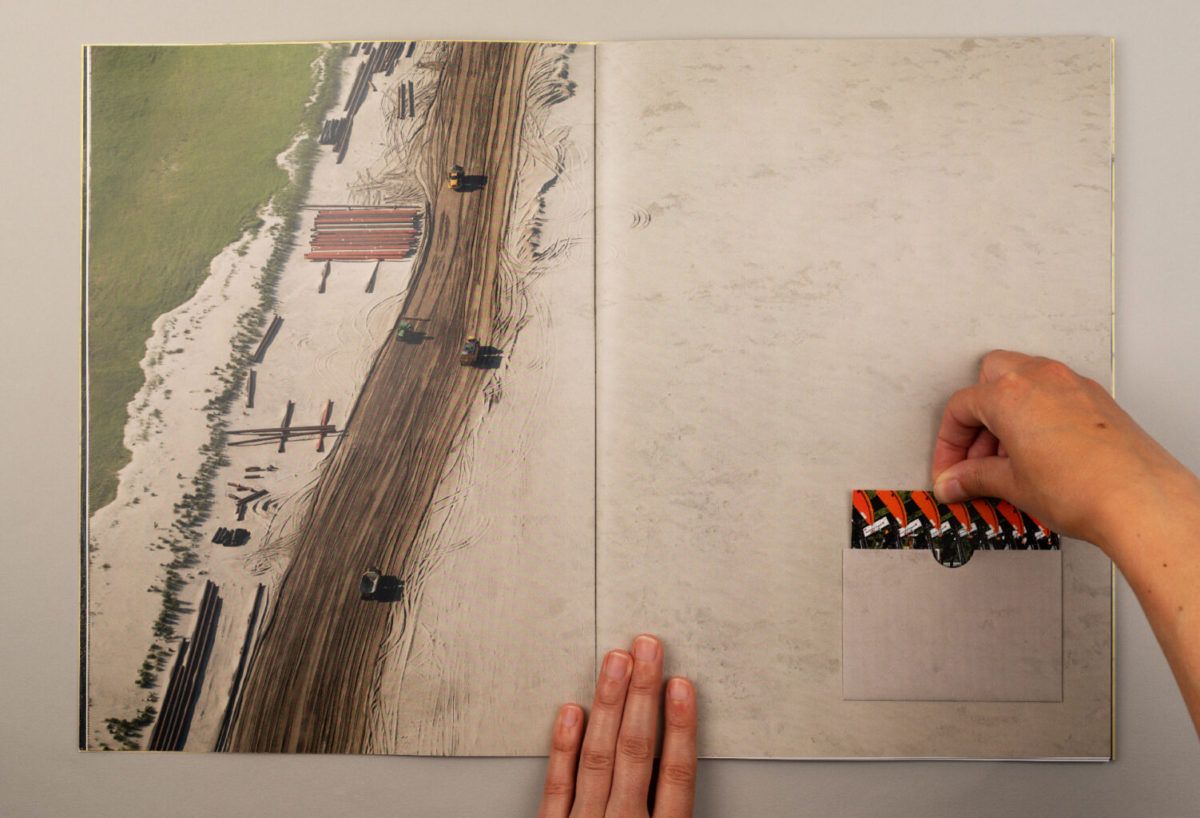
Mountaintops to Moonscapes (a related follow-up project to Oil Sands) comprises a large format book with slip-sleeve, hand-bound in multiple parts, and a booklet in which origami folding techniques are used to express the violence being done to the Appalachian landscape. This book also includes little pockets bound on pages – carefully holding little ‘calling cards’ to remind us that the environment is not fully damaged… Yet. Or again, perhaps the inserts are there to say ‘don’t forget about me… or ‘just stopped by’. A quaint thought perhaps, but maybe this more accurately reflects mainstream attitudes toward environmental change?
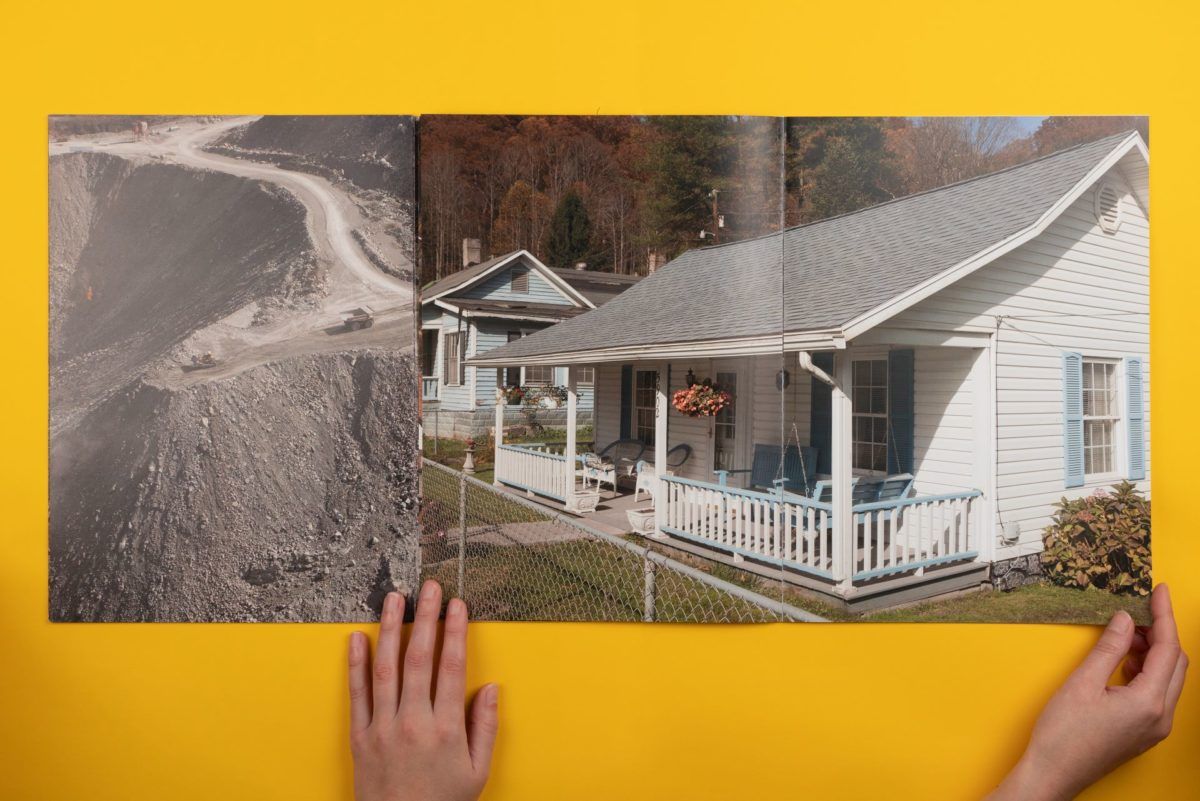
Each of these books were hand-bound and assembled. The books each were designed and produced with the skills of Emily Macaulay at Stanley James Press, Chloe Juno, and many others. Alan Gignoux is a London-based photographer, whose photographic work brings unknown stories to the forefront. The majority of his work is based around people and place, and their relationship to the land they live on. His career as a photojournalist working on the environment and the effects of displacement on communities around the world is reflected in these books. Alan’s images create a visual language of lines, marks, structures, and hulking equipment – a codex which brings the viewer no closer to understanding the ‘business language’ of what is going on beneath the surface.
The interviews and images featured in Tar Sands give a voice and a face to some people directly impacted by the oil companies. The interviews cover topics which include politics, economy, and the regulation of the oil sand industry. People such as a farmer, a doctor, a sociologist, and a local business owner from the area discuss the impact of the oil sands on their health, their community and the environment.
The interviews are presented so that the reader can pick any section to start with. No narrative is required to get the gist of the larger story if you pick to read about the environment first, or vice versa for the economy. These testaments provide background and information about the people whose lives have been irreparably changed; a significant piece of the larger narrative.
I was surprised to read a few passages which made comment about the coal industry like it wasn’t all that bad after all. ‘Hey, we all got these good jobs for a while, and that was good, right?’ (Pay no attention to the man behind the curtain). However, their lives, their Truths, lie in stark contrast to the un-natural surroundings captured by Alan’s camera.
As to why Gignoux chose to focus on these particular projects, he states: “The sheer size of the industry and the process that is used to extract the Bitumen — which is known as the dirtiest fossil fuel — is an example of the bottom of the barrel, as the costs, although falling, are also the highest”, explains Gignoux. “I wanted to explore and show the experience of those living on and alongside land that is being used in this way. I focus on this project and this topic because the environment is the biggest challenge facing humanity.”

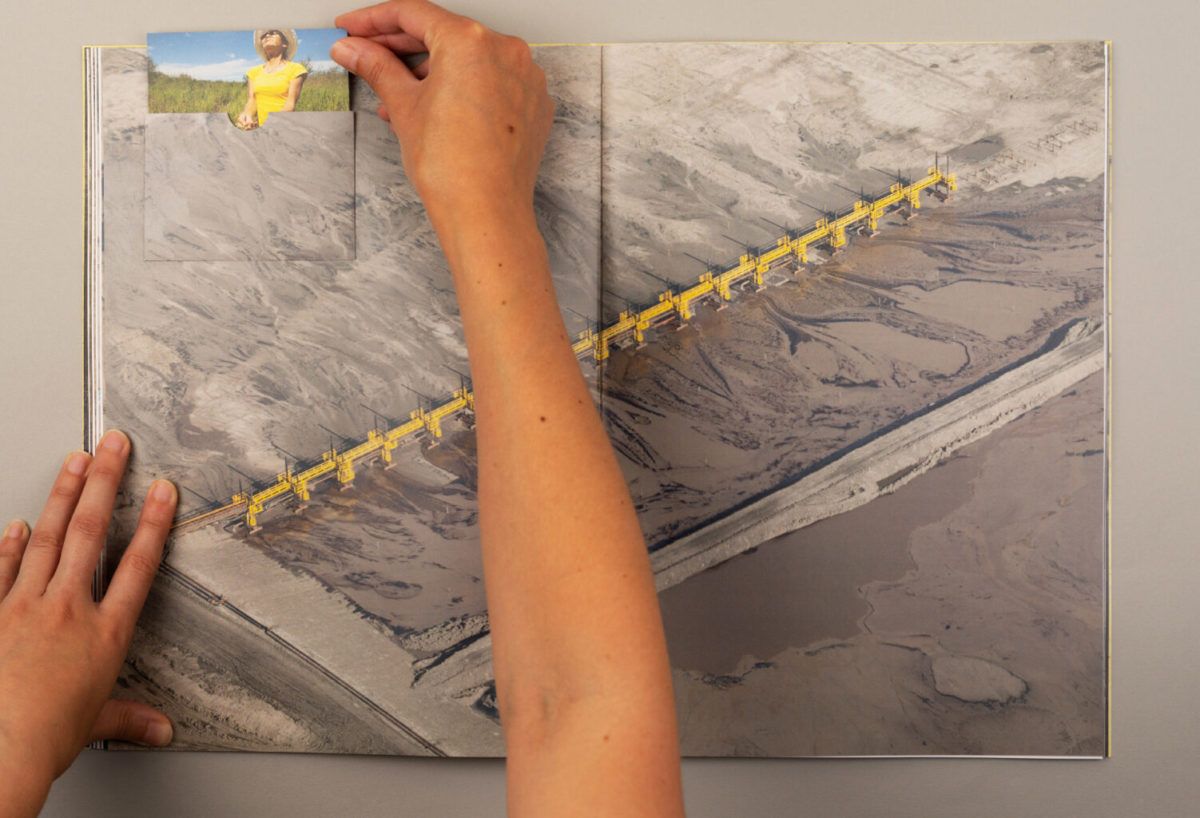
I recently heard a segment on National Public Radio which talked about how a petroleum company created an entire campaign designed to educate children about the role of plastics in their lives. A book was published and given to school children. A story in the book imagined a world without plastic products. What if you woke up one day and plastic didn’t exist? Tons of objects the children presumably take for granted were missing in the story, which displaced their normalcy, and prompted the kids to consider the resulting calamity. While a promotion like this is indeed factual – we do rely heavily on plastics, and all the things it constructs in our day-to-day lives, but ultimately how do we reconcile the destruction and alteration of our environment against having a new toothbrush every six months that just gets thrown away in the end?
Mountaintops to Moonscapes is Gignoux’s segue between Alberta and West Virginia. Same story, different stage. Gignoux summarizes his project in part by writing, “Appalachia is the poorest region of the United States, earning the region the nickname,’America’s Colony,’ while the giant coal companies have earned the nickname, ‘King Coal’. King Coal has extracted the coal by using some of the most ruthless methods in what has been called, ‘Capitalism’s Dark Side.’ Today, the coal companies have found an even better way to extract the coal, just blow up the mountains without a care for reclamation. This documentary describes the socio economic costs of Mountain top removal.”
Alan’s work draws out other strong connections for me, and I can’t help but think of West Virginia photographer Roger May. His work and projects help show the beauty of his state and the impact that the coal industry had there. May expresses his love for where he lives and all the aspects of it with an intrinsic love. It’s almost a religion. I see echoes of this feeling in the work of Rich-Joseph Facun and the writing of Alison Stine. Appalachia namechecks all around.
I always enjoy experiencing a photo book that doesn’t deny the process through which it was made. Exposed binding, gatefolds, manually inserted ephemera… If the spine of the book was hand-stitched, I love seeing the way it weaves in and out of the paper. The intricate, handcrafted attention given to constructing these photo books is absolutely paramount. It takes an extreme amount of craft, care, attention, to make something look this effortless and simple. The multiple folds for pages, gatefold spreads, inserts, and all the other magic put into these bound works of art dramatically raises the bar – and also sparks this idea: the hand-made aspect of the book is an ironic contrast to the seemingly mindless mechanized production process of extracting oil.
Once a reader gets to the middle spread of Mountaintops to Moonscapes, each page and each layer of the book past that middle point is covered and buried by the preceding and following pages and images; a clever metaphor of scenes and homes and businesses and churches and towns being covered by an alien-looking crust… impacting the economic activity and social aspects of the community where people’s lives are changed forever.
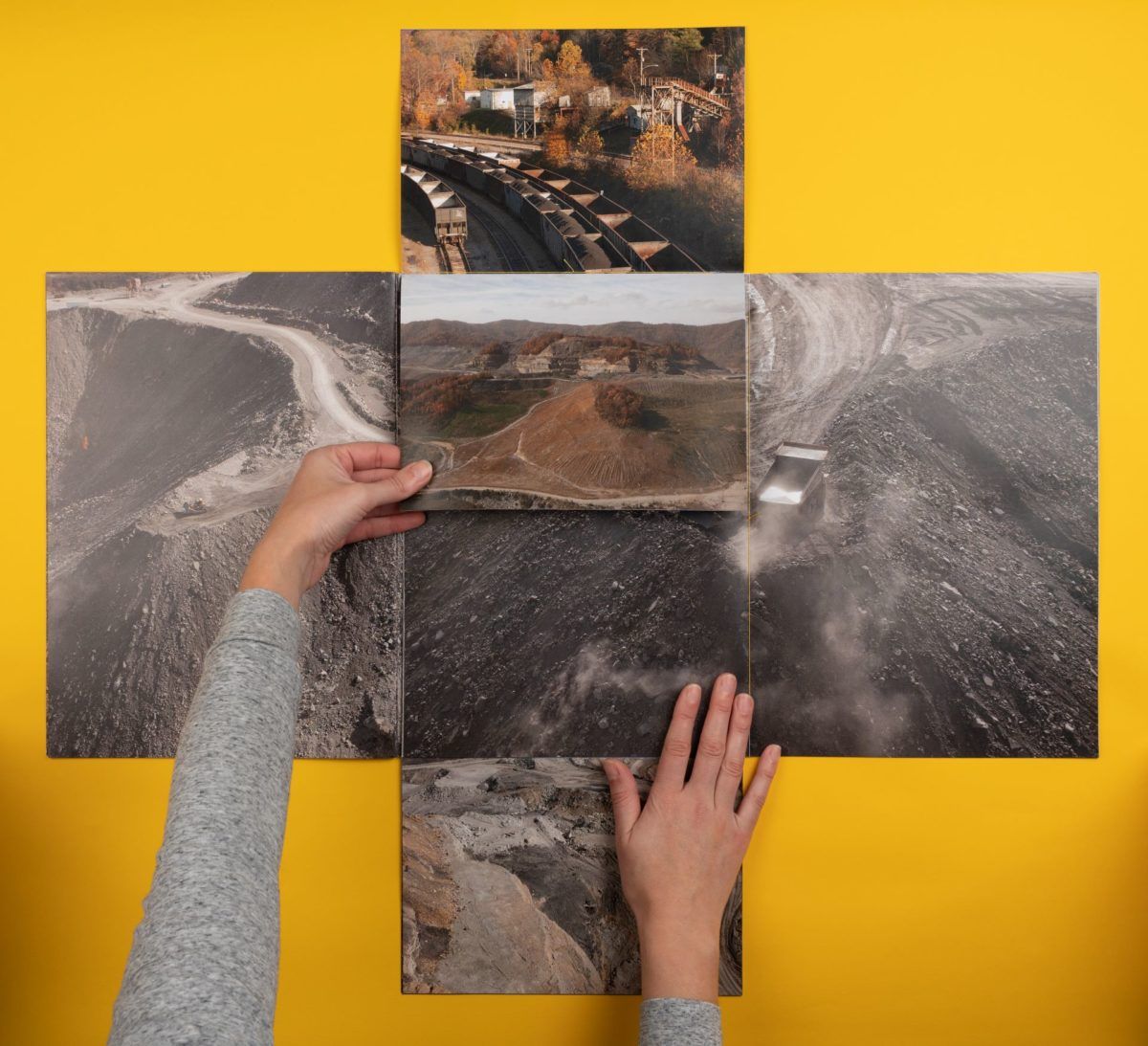
One hopes the burials are premature – but in the back of my mind I recall all the other projects and books and images I’ve seen which harken a call to the end-times… the “no-going-back line” drawn in the parched sand. Will the climate’s temperature rise too much within my lifetime? My children’s lifetime? Will humans run out of drinking water in the next 10 years? What does this all mean for the 2030’s, or the 2050’s? Alan’s powerful and stark images bring these question to the fore – and I for one, am fearful of the answers.
::
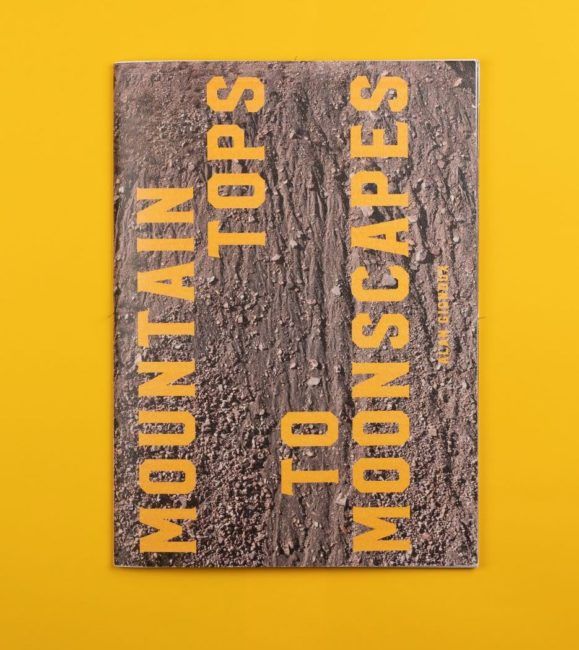
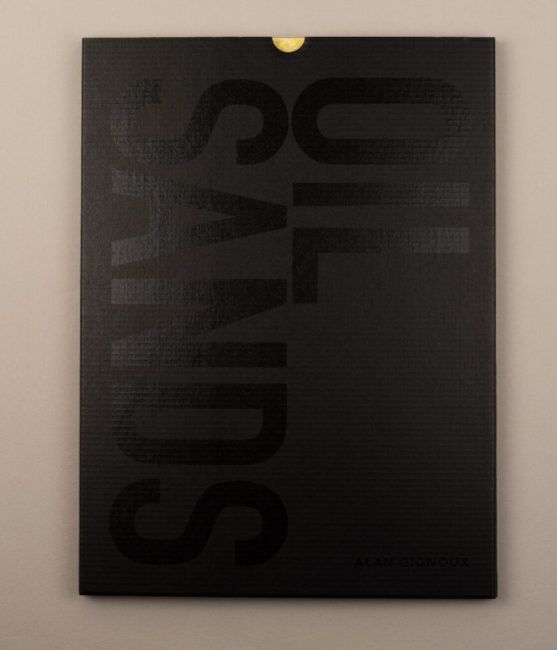
Mountaintops to Moonscapes
Edition of 100
350 x 255mm
Handbound
56 pages in larger book plus small 12-page booklet (measuring 148 x 210mm) containing a large ‘exploding’ foldout page (measuring 300 x 300mm
44 colour photos in total (excluding covers)
ISBN: 978-1-9999610-1-5
Essay: Jane Branham
Photographer: Alan Gignoux
Designer: Emily Macaulay at Stanley James Press & Chloe Juno
Researcher/Editorial: Jenny Christensson
Oil Sands – Tar Sands
Edition of 200
350 x 255mm
64 pages including 16 smaller text pages
53 photographs in the bound book with an additional 8 photographs on small cards in hidden pockets
ISBN: 978-1-9999610-0-8
Photographer: Alan Gignoux
Essays: John O’Connor, Alan Gignoux interview by Stuart Reigeluth
Designer: Emily Macaulay at Stanley James Press & Chloe Juno
Researcher & Contributing Editor: Christopher Kemble
Researcher and Contributing Editor: Brittany Kelly
Researcher/Editorial: Jenny Christensson
::
Alan Gignoux has been working as a professional documentary photographer since 2000, working as a stringer with photographic agencies such as Reuters and Associated Press, and as an independent photojournalist. Gignoux has completed residencies with the NCAA in Russia, and The Rucka Centre in Cesis, Latvia. His award-winning work has been exhibited all over the world. Born in the United States, Alan now lives and works in London, England. Visit his website at https://gignouxphotos.com/
Location: Online Type: Book Review, environment
Events by Location
Post Categories
Tags
- Abstract
- Alternative process
- Architecture
- Artist Talk
- Biennial
- Black and White
- Book Fair
- Car culture
- charity
- Childhood
- Children
- Cities
- Collaboration
- Cyanotype
- Documentary
- environment
- Event
- Exhibition
- Family
- Fashion
- Festival
- Film Review
- Food
- Friendship
- FStop20th
- Gun Culture
- Italy
- journal
- Landscapes
- Lecture
- love
- Masculinity
- Mental Health
- Museums
- Music
- Nature
- Night
- photomontage
- Podcast
- Portraits
- Prairies
- River
- Still Life
- Street Photography
- Tourism
- UFO
- Wales
- Water
- Zine

Leave a Reply